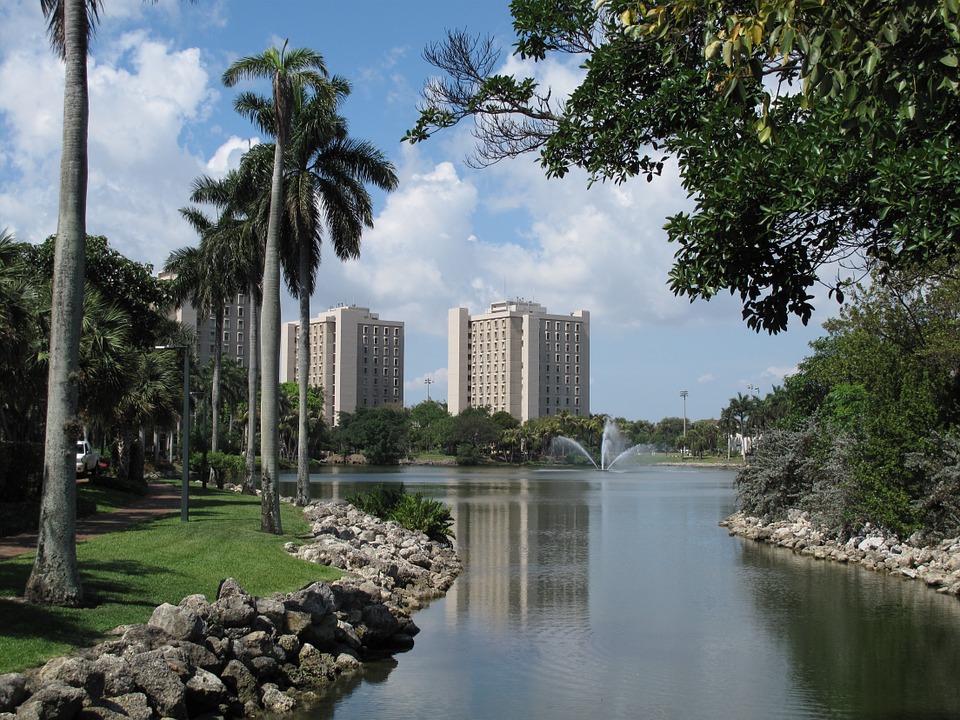By Joseph Wright, staff writer for Save the Water™ | October 5, 2014 |
Introduction
Water conservation is something that everyone can take part in. While it is important to initiate ecologically conscious changes in our daily lives, it is important to encourage that change in all parts of our communities. Across the country, nearly 20 million students attend colleges and universities.7 These institutions have the ability to make a huge impact, negative or positive, on the environment. Some have already taken a leading role in being eco-conscious such as The University of Colorado, The University of New Hampshire, and Middlebury College in Vermont. Many other institutions have also taken huge steps forward, including the University of Miami (UM) in Coral Gables.
Ongoing Efforts
In 2005, UM launched a new program entitled Green U with the aim of making the University “a community leader in the acquisition of environmentally responsible products and the practice of ecologically sound maintenance and operations procedures.”5 Some initiatives include:9
• Installation of low-flow showerheads in residence halls
• Timer controls on irrigation systems
• Installation of low-flow urinals and toilets
• An aggressive water leak detection program
Amazingly, since 2012, UM has expanded, increasing its total square-footage while decreasing its total water-use.9 In an effort to decrease drinking water waste, UM has installed water-filling stations onto current drinking water fountains. During the fall, incoming students are given a reusable water bottle to promote use of these stations.9 The bottles and new filling stations are a part of the “Take Back The Tap” to reduce water waste and plastic bottle use.2,9
As the University has expanded, it has also made sustainable growth a priority. All new buildings erected on UM campuses meet the U.S Green Building Council’s LEED Silver certification.4 In addition to the new Silver standard, the Fieldhouse on the Coral Gables campus meets LEED Gold certification.7
Careful Planning
In 1993, a philanthropist and trustee of UM named Frank Smathers Jr. donated a 32-acre estate to the University.1 Eleven acres of this property were used to build housing for University faculty while keeping a low-impact and water conservation mindset.1 As a whole the project was so successful, it earned the Urban Land Institute Woolbright Dream Green Reality Award in 2009.1 Perhaps the most notable feature of these buildings is that they are very energy efficient. In water conservation, energy efficiency is vital. To produce nearly every kind of energy, water consumption is required – a chart provided by the IEEE can be found here.10 To keep energy use low and sustainable, solar panels have been installed to power the Patricia Louise Frost Music Studios, a solar phone charging station has been installed in the Richter Library, and campus trash and recycling compactors have had solar panels installed.7 Throughout the University’s expansion over the last few years, the annual energy usage has decreased.7
Recycling
As the University expands, it has also expanded its recycling program. Single-stream recycling has been adopted campus-wide and directly contributes to better water quality overall. In Florida, nearly 90% of drinking water comes from aquifer systems.8 The Biscayne Aquifer of South Florida is easily permeable due to its proximity to the surface of the ground making it more susceptible to pollution from trash.8 To reduce the amount of total waste, UM has instituted the Trayless Dining Initiative.8 In its first year, the initiative reduced food waste by 50 tons (17%).10
Of course, the University of Miami is just one place making efforts to live in a more ‘green’ world. In just a few short years, UM has made massive strides. Institutions across the United States are taking similar steps thanks to motivated and dedicated individuals – students and faculty.
What Can I Do?
Currently, if you are a part of an academic institution, you can help make them a more green, water-conscious place. Over 350 University Presidents have signed the Talloires Declaration via the Association of University Leaders for a Sustainable Future (ULSF) – UM included.6 The Declaration stands as a commitment to pursuing environmentalism at an institutional level. If your institution’s president has not already signed the Declaration here are steps, listed in the link below, that the ULSF recommends to getting them as signatories.
Talloires Steps. For more information, visit http://ulsf.org/
President’s Climate Commitment. For more information, visit http://secondnature.org/
If you are currently a student or employee of the University of Miami you can assist future energy based programs by taking the survey below as part of the U Conserve Campaign, please visit http://bit.ly/2smBEXS
References
- Association of University Leaders for a Sustainable Future. “Talloires Declaration.” http://ulsf.org/talloires-declaration/
- Food & Water Watch. “Take Back the Tap.” http://www.foodandwaterwatch.org/water/take-back-the-tap/
- National Center for Education Statistics. “Fast Facts – Enrollment.” http://nces.ed.gov/fastfacts/display.asp?id=98
- The University of Miami. “Green Building.” http://www.miami.edu/finance/index.php/green_u/green_building/
- The University of Miami. “History.” http://www.miami.edu/finance/index.php/green_u/who_we_are-1/history/
- The University of Miami. “Princeton Review – Green Campus.” https://umshare.miami.edu/web/wda/greenu/NEW%20IMAGES%202014/Princeton-greenPic.gif
- The University of Miami. “Recycling.” http://www.miami.edu/finance/index.php/green_u/recycling/
- The University of Miami. “Sustainability.” https://new.dineoncampus.com/miami/sustainability
- The University of Miami. “Water.” http://www.miami.edu/finance/index.php/green_u/water/
- Willie D. Jones. April 1, 2008. “How Much Water Does It Take To Make Electricity?.” IEEE. http://spectrum.ieee.org/energy/environment/how-much-water-does-it-take-to-make-electricity





